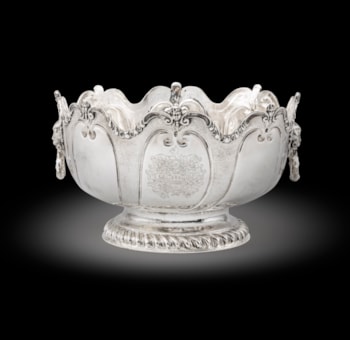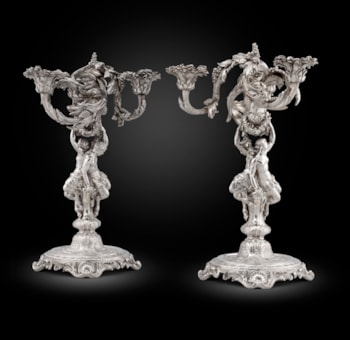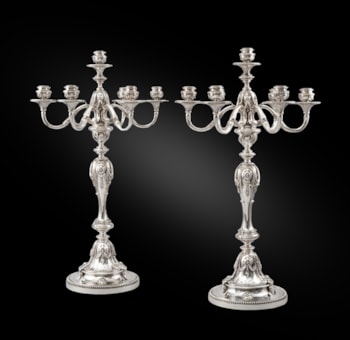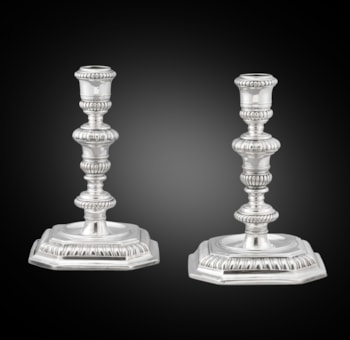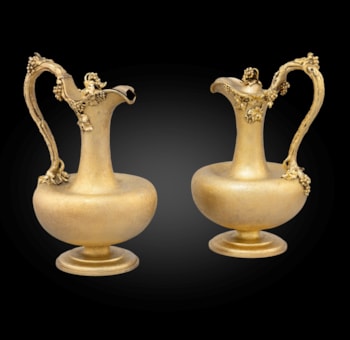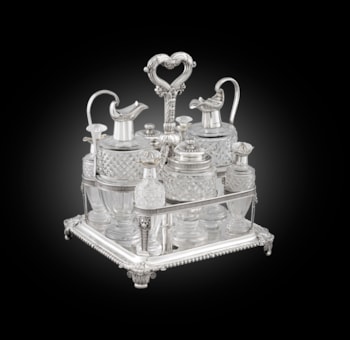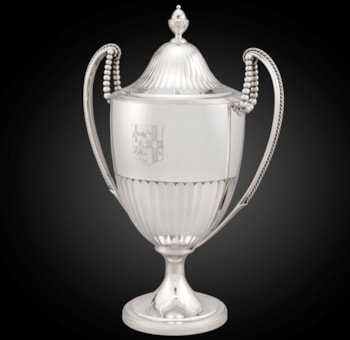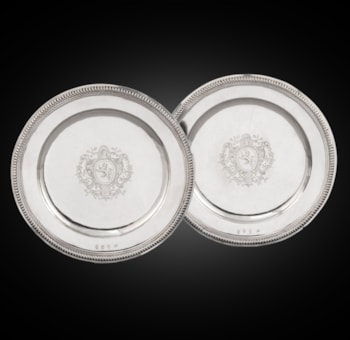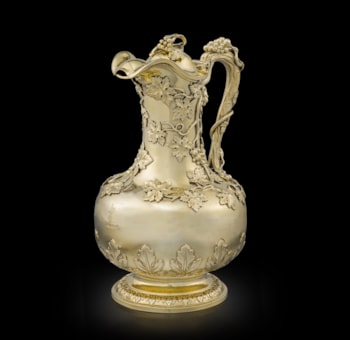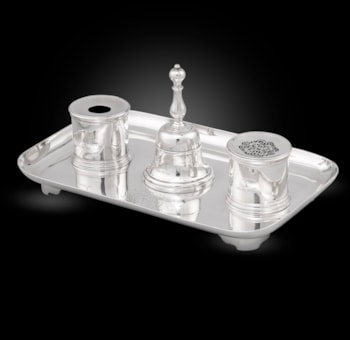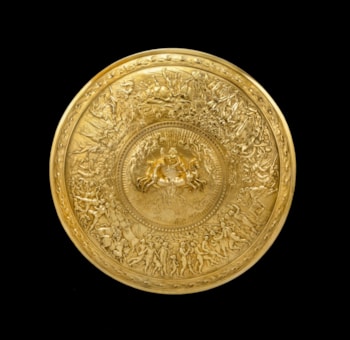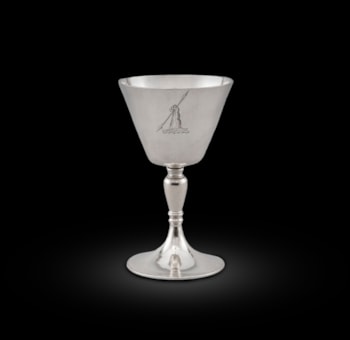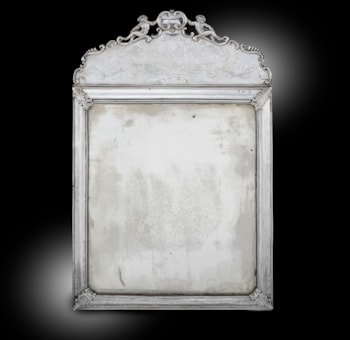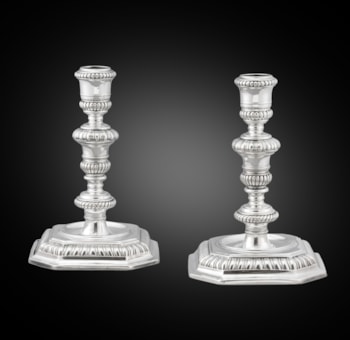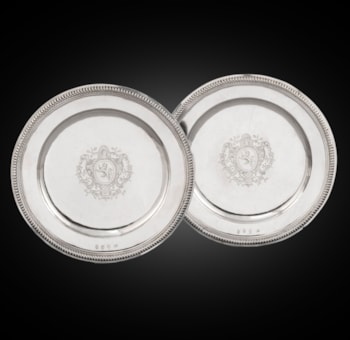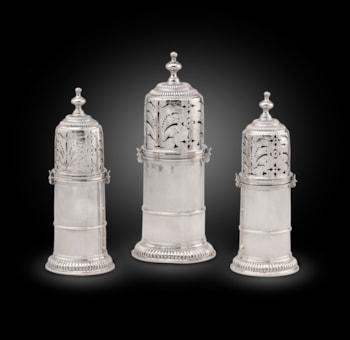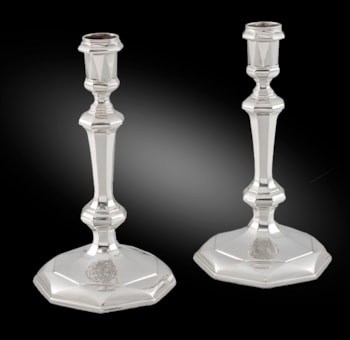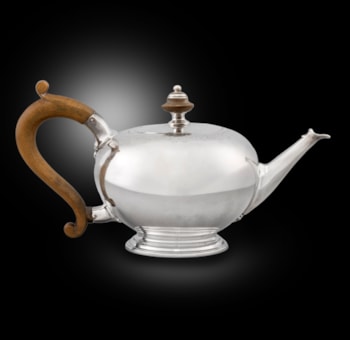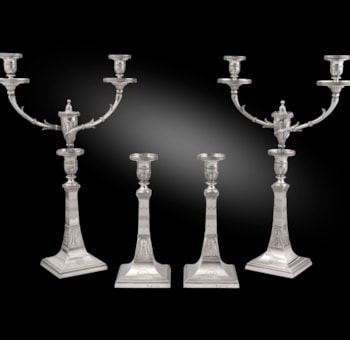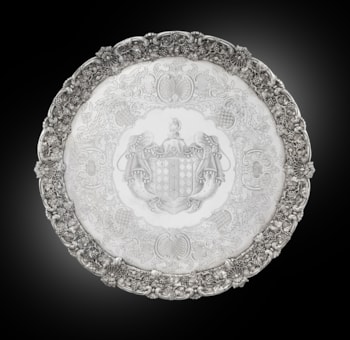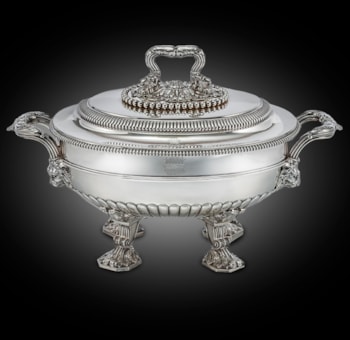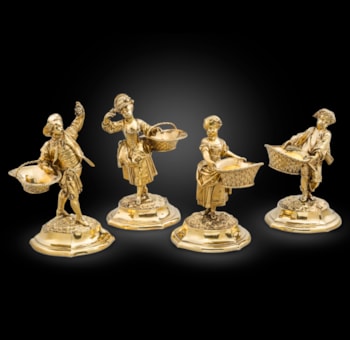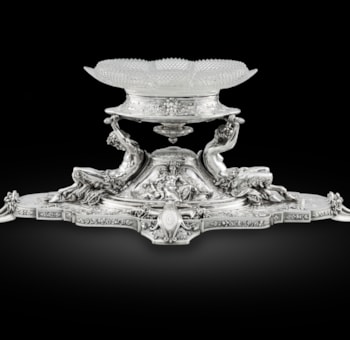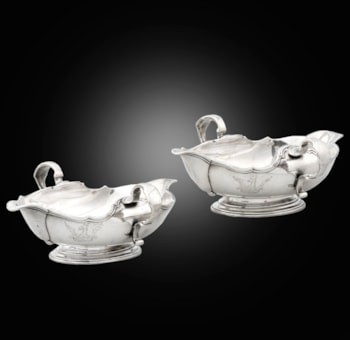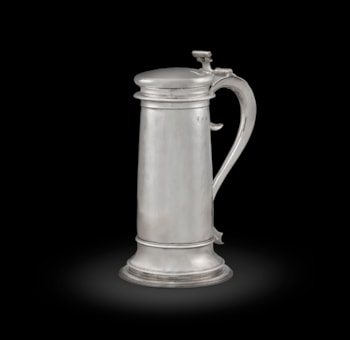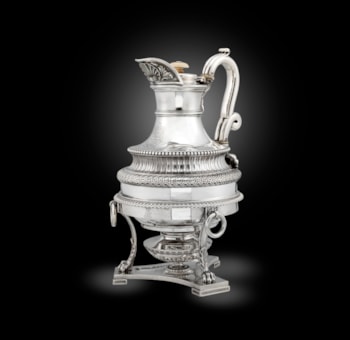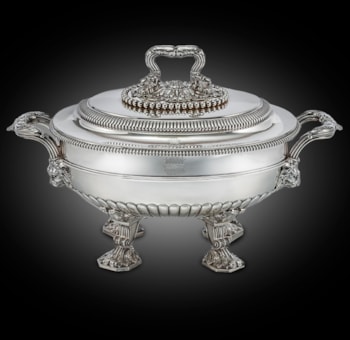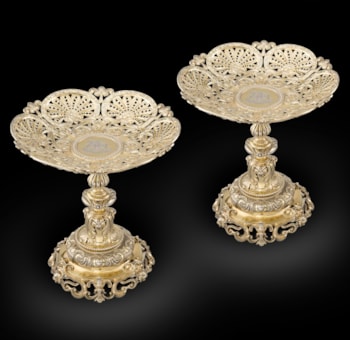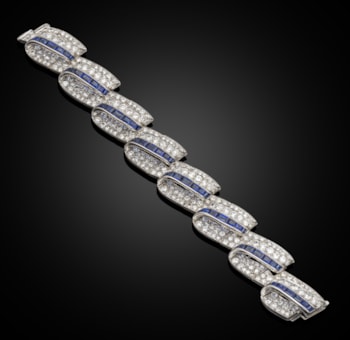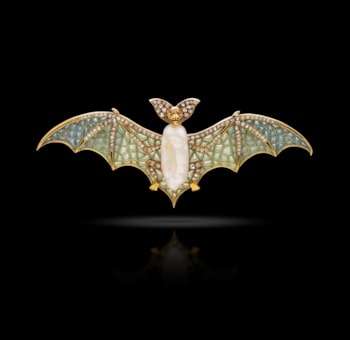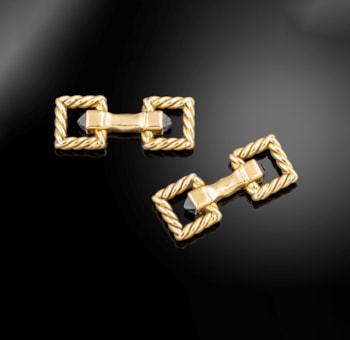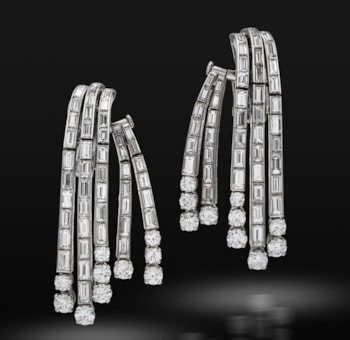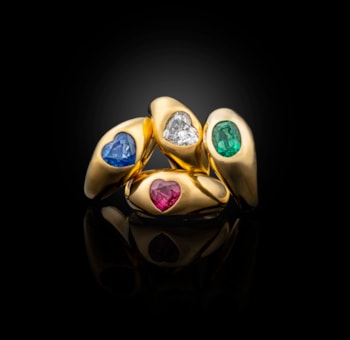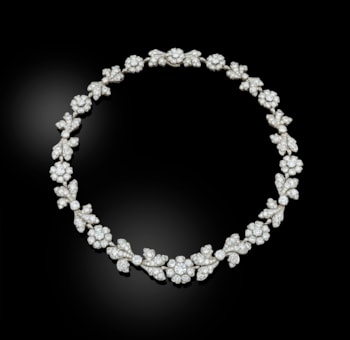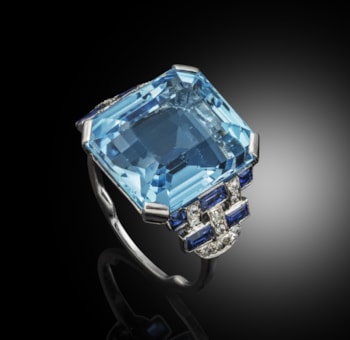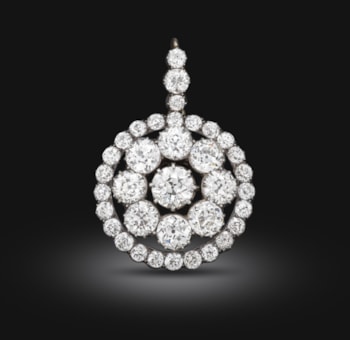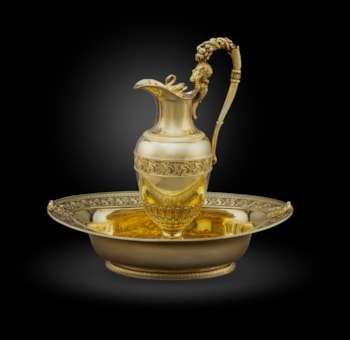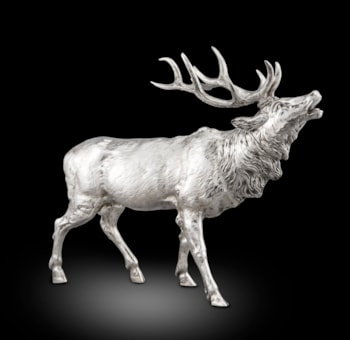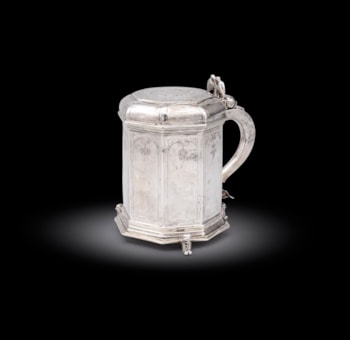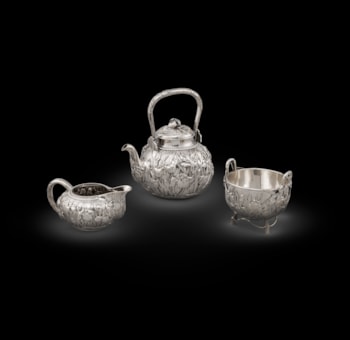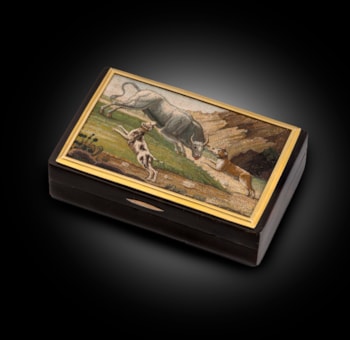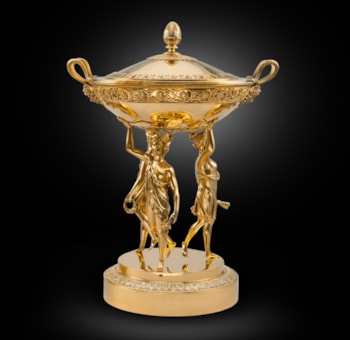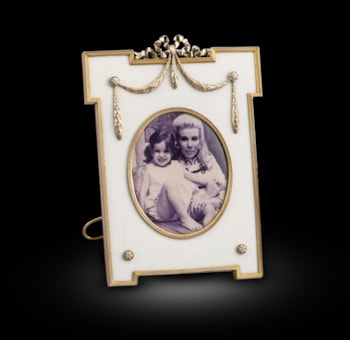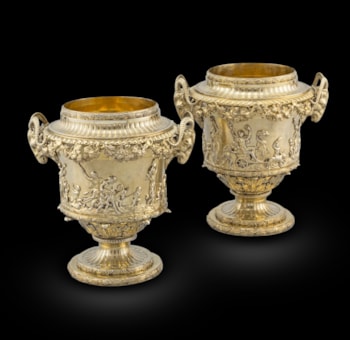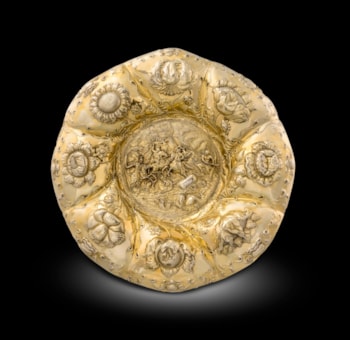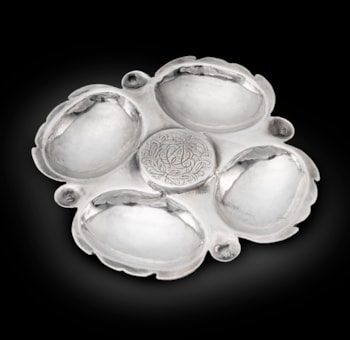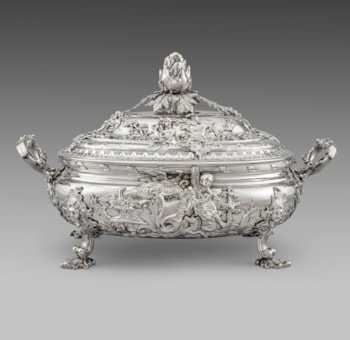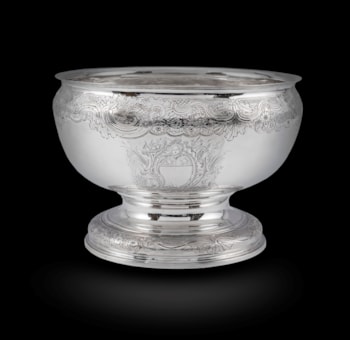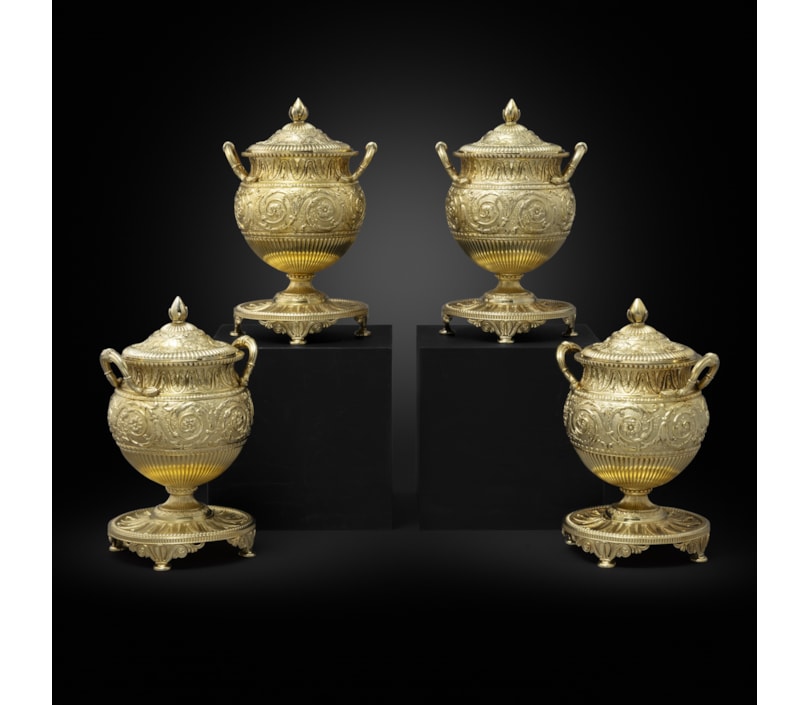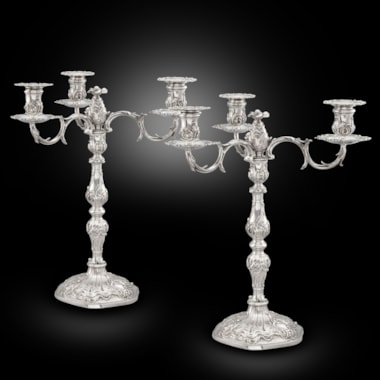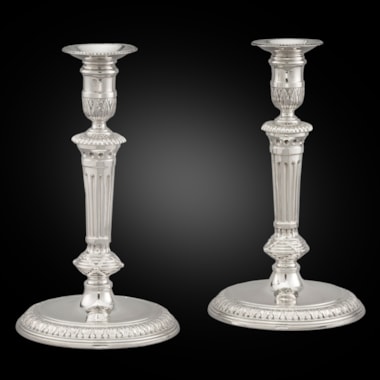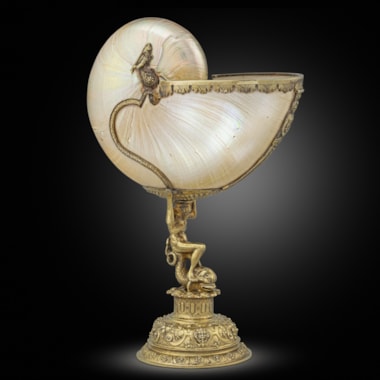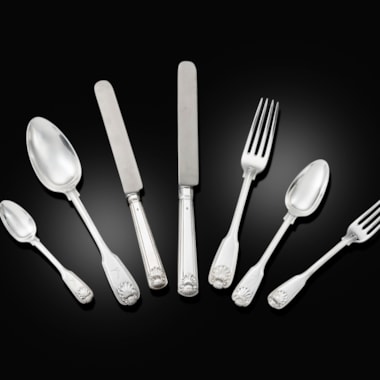Roman marble urns of this form were well known in England from Piranesi's etchings and actual examples in the collections of classical sculpture at Newby Hall and Lansdowne House in London. The model proved a popular one for Rundell's, the royal goldsmiths, but curiously it was never produced on a larger scale for wine coolers. These examples are among the earliest known; the Prince of Wales was to order a set of eight from Rundell's in 1811 at a cost of £376 4s, described on the invoice as "very elegant" cream vases. The model continued to be produced for Rundell's by Paul Storr in his Dean Street workshops: a pair of examples by Storr was included in the loan exhibition Royal Goldsmiths: The Art of Rundell & Bridge 1797-1843, no. 30 at Koopman Rare Art 2005.
Earl Howe, sale, Christie's, London, 1 July 1953, lot 111
Collection of Mrs.Faye Plohn, sale, Sotheby's, London, 16 July 1970, lot 137
J. B. Hawkins Antiques
Koopman Rare Art
Collection of Kerry Packer
Koopman Rare Art
Private Collection
The partnership of Digby Scott and Benjamin Smith produced some of the greatest silver works of the early 19th century. Scott and Smith jointly ran workshops located in Greenwich, England from 1802 to 1807 and during their brief partnership were the principal suppliers of silver masterpieces to the esteemed firm of Rundell, Bridge & Rundell. At the time London's most prestigious firm, these jewellers and silversmiths supplied the official plate ordered by the Lord Chamberlain's office, and were the official "Jeweller, Gold and Silversmiths to the Crown" from 1798 to 1843. Working in the cusp of the late Georgian and early Regency periods, the works of Scott and Smith often feature elements of the classical revival style such as grapevines and rams' heads, all crafted in exquisite, sumptuous detail. One of their most renowned collaborative efforts, the Duke of York Baskets, created for Frederick Augustus (1763-1827), second son of George III, is currently on display at the Powerhouse Museum in Australia.
You May Also Like




